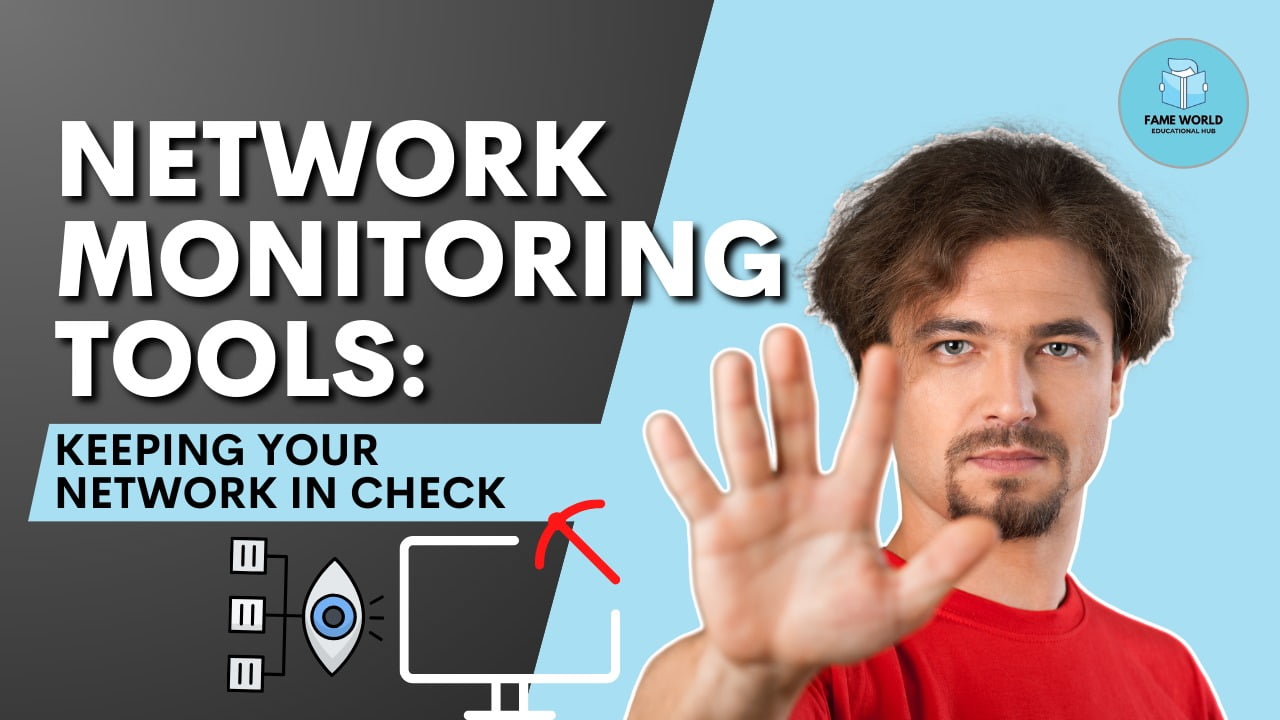In today’s digital age, businesses and organizations depend heavily on robust network infrastructures. Ensuring that these networks operate smoothly is essential for efficiency, security, and reliability. This is where network monitoring tools come into play. They help network administrators keep a close eye on the performance, health, and security of networks. In this blog post, we’ll delve into what network monitoring tools are, their benefits, key features to look for, and some popular tools in the market.
What Are Network Monitoring Tools?
Network monitoring tools are software applications or hardware solutions that allow IT professionals to monitor, manage, and optimize network performance. These tools provide insights into various network metrics, including bandwidth usage, latency, packet loss, and device health. By continuously analyzing network traffic and performance, these tools help identify issues before they escalate, ensuring that networks run efficiently and securely.
Why Are Network Monitoring Tools Important?
Proactive Problem Detection: With real-time monitoring, network administrators can detect and address issues before they affect end-users. This proactive approach minimizes downtime and enhances user experience.
Performance Optimization: Network monitoring tools provide insights into bandwidth usage and application performance, helping administrators optimize resource allocation and improve overall network performance.
Security Monitoring: These tools can detect unusual traffic patterns, potential security breaches, and unauthorized access, enabling organizations to respond to threats promptly.
Compliance and Reporting: Many industries require compliance with regulations. Network monitoring tools can help organizations generate reports and maintain logs for audits.
Resource Management: By analyzing traffic patterns and resource usage, organizations can make informed decisions about scaling their network infrastructure.
Key Features of Network Monitoring Tools
When selecting a network monitoring tool, consider the following key features:
Real-time Monitoring: The ability to monitor network performance in real time is crucial for proactive management.
Alerting and Notifications: Automated alerts for performance degradation, outages, or security breaches ensure timely responses.
Traffic Analysis: Insights into bandwidth usage and application performance help identify bottlenecks and optimize resources.
Device Discovery: Automatic detection of network devices (routers, switches, servers) simplifies network management.
Reporting and Analytics: Comprehensive reporting tools provide insights into network performance over time, aiding in strategic planning.
Security Features: Intrusion detection, vulnerability assessments, and compliance reporting are essential for maintaining a secure network.
Popular Network Monitoring Tools
Here are some of the most widely used network monitoring tools available today:
1. Nagios
- Overview: An open-source monitoring tool that provides comprehensive monitoring for networks, systems, and applications.
- Key Features: Customizable alerting, plugin support, and extensive community support.
- Best For: Organizations looking for a flexible, cost-effective solution.
2. Zabbix
- Overview: Another open-source tool that provides real-time monitoring of networks, servers, and applications.
- Key Features: Easy setup, strong visualization options, and customizable dashboards.
- Best For: Businesses needing a scalable monitoring solution.
3. SolarWinds Network Performance Monitor
- Overview: A powerful commercial tool designed for monitoring the performance of network devices.
- Key Features: Advanced network insights, intuitive interface, and automated network mapping.
- Best For: Enterprises requiring comprehensive and professional-grade monitoring solutions.
4. Paessler PRTG Network Monitor
- Overview: A versatile monitoring tool that tracks various metrics across the network.
- Key Features: Custom sensors, cloud integration, and an easy-to-use web interface.
- Best For: Organizations looking for an all-in-one solution.
5. ManageEngine OpManager
- Overview: A network management tool that offers real-time monitoring and management of network performance.
- Key Features: Automated network discovery, customizable dashboards, and detailed reports.
- Best For: Businesses needing a comprehensive management solution.
How to Choose the Right Network Monitoring Tool
Choosing the right network monitoring tool depends on several factors:
Size of Your Network: Consider the number of devices you need to monitor and select a tool that can scale accordingly.
Budget: Determine how much you are willing to invest in monitoring tools. Open-source solutions can be cost-effective but may require more setup and maintenance.
Features: Identify the key features that are essential for your organization. Consider whether you need real-time monitoring, alerting, traffic analysis, or security features.
User Interface: A user-friendly interface can simplify the management of network performance and issues.
Support and Community: Look for tools with strong community support and responsive customer service.
Interactive Section: Assess Your Network Monitoring Needs
Take a moment to assess your network monitoring requirements by answering the following questions:
- What is the size of your network? (Small, Medium, Large)
- What types of devices do you need to monitor? (Routers, Switches, Servers, Applications)
- What are your primary goals for network monitoring? (Performance, Security, Compliance, Resource Management)
- What is your budget for network monitoring tools? (Free, Low-Cost, Premium)
- Do you have any specific features in mind? (Real-time monitoring, Custom alerts, Traffic analysis)
Click Here to Submit Your Answers (This link would ideally take users to a form or survey.)
Conclusion
Network monitoring tools are essential for maintaining the performance, security, and reliability of your network infrastructure. By proactively identifying issues and optimizing resources, these tools help ensure that your network runs smoothly. Whether you choose an open-source solution or a commercial tool, selecting the right network monitoring tool tailored to your organization’s needs is crucial for long-term success.
Final Thoughts
- Are you currently using a network monitoring tool? If so, which one?
- What challenges have you faced in managing your network?
- Share your thoughts and experiences in the comments below!
If you found this blog post helpful, don’t forget to share it with your network! Subscribe to our newsletter for more insights on network management, tools, and best practices.



